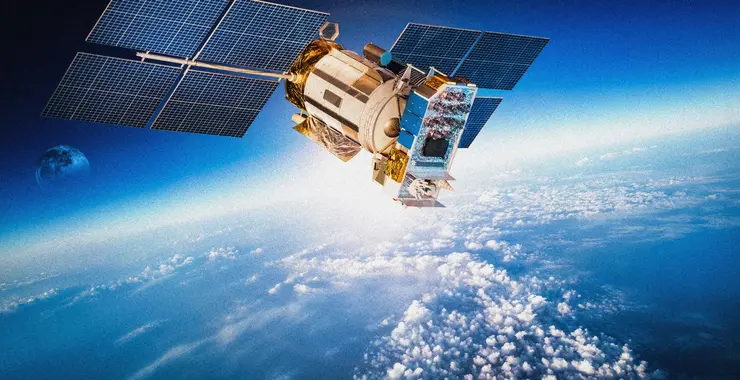Welcome back, my aspiring cyberwarriors!
In earlier posts here, we have described hacking satellite communication systems. While many might see that type of hacking as very advanced and maybe a bit esoteric, new technologies are about to make satellite communication ubiquitous for everyone with a cellphone. We are on the cusp on an era where ALL cellphones will soon be able to connect to satellites for global communication. This will make satellite hacking even more important in your arsenal of hacking tools and techniques.
Why Cellphone Satellite Connectivity?
In our globally networked society, we sometimes end up in places without cellular networks. Whether hiking, sailing, or working in rural areas, losing connectivity can be inconvenient or dangerous. What if your smartphone could switch to satellite connectivity when cellular networks vanish?
Skylo’s technology makes this possible.

To solve this, we need a bridge between cellular and satellite connectivity. While satellite phones exist, they’re costly, bulky, and separate from our devices. Let’s explore how Skylo is revolutionizing this with their Non-Terrestrial Network (NTN) technology.
What is Skylo?
Skylo is a global NTN service provider connecting regular devices to satellites. Unlike traditional satellite services, Skylo works with your existing smartphones, wearables, automotive systems, and IoT devices. This technology enables seamless switching between satellite and cellular, eliminating coverage gaps.
Key features of Skylo include:
Chipset-Level Integration: Devices automatically find satellite signals when they lose cellular connectivity.
Standards-Based Approach: Skylo uses the same technical standards (called 3GPP) that your phone already uses to connect to cell networks. This ensures their satellite system can talk to regular phones without special hardware.
Enterprise-Grade Security: Skylo uses AES 128-bit encryption for secure communications.
Global Coverage: Their network covers over 50 million square kilometers, supported by ten Earth stations in 35 countries across 4 continents.
Let’s dive into how Skylo works.
Understanding Skylo’s Technology
Skylo doesn’t own satellites; it leverages existing infrastructure by partnering with operators like Terrestar Solutions, Viasat, Ligado Networks, and EchoStar. This strategy allows global scale without the cost of launching satellites.
At the core of Skylo’s innovation is its fully integrated approach, spanning every layer of connectivity. This includes the modem and chipset within devices (the smartphones, wearables, and IoT devices themselves) Skylo’s Base Station, the Skylo Network Core, and the network and user applications that enable seamless functionality (see the image below).

What sets Skylo apart is its use of dedicated Mobile Satellite Service (MSS) spectrum in globally allocated frequency bands. Unlike mobile operators that share spectrum, Skylo operates on a dedicated channel, ensuring continuous and interference-free coverage. Since the regulatory framework for MSS spectrum has been in place for decades, this approach allows for rapid deployment and widespread accessibility.
Skylo also pioneered the first commercial NTN (Non-Terrestrial Network) Radio Access Network (RAN), a breakthrough that makes satellite connectivity more accessible to both enterprises and consumers. With this innovation, standard cellular devices can switch to satellite networks seamlessly—without requiring costly satellite-specific components.

Technical Features
Efficient Power Management
Skylo addresses power consumption by engineering a solution with minimal battery impact despite the distance signals travel to satellites. The NB-NTN waveform includes power-saving modes like eDRX and PSM, maintaining satellite connectivity without extra antennas or power draw.
Spectrum Innovation
Skylo’s use of dedicated MSS spectrum is a major innovation, avoiding interference issues seen with shared terrestrial network spectrum. This approach eliminates network interference when satellite and cellular networks share frequency bands.
Creates a complete network overlay instead of a patchwork solution
Leverages existing regulatory frameworks for faster global deployment
Ensures seamless coverage without gaps
Earth Station Infrastructure
Skylo’s satellite connectivity is supported by a robust ground network of ten strategically placed Earth Stations worldwide. These stations form the backbone of Skylo’s Radio Access Network (RAN), processing signals between satellites and the terrestrial internet.
Each Earth Station can:
Track multiple satellites simultaneously
Process signals with minimal latency
Handle authentication and encryption
Route data efficiently to and from cellular networks
The Engineering Behind Skylo
While we’ve covered the broad strokes of Skylo’s technology, understanding the intricate engineering that makes direct-to-device satellite communication possible reveals why this represents such a significant breakthrough. Let’s explore the technical foundations that enable standard cellular devices to communicate with satellites without modification.
Signal Processing Architecture
Skylo’s system employs sophisticated Digital Signal Processing (DSP) algorithms to overcome the fundamental challenges of satellite-to-device communication:
Challenge | Technical Solution | Engineering Impact |
Signal Attenuation | Adaptive coding and modulation with 1/5 rate encoding | Enables reliable decoding of signals 1000x weaker than cellular |
Frequency Shift | Real-time Doppler compensation algorithms | Corrects for satellite movement at 7.8 km/s relative velocity |
Timing Synchronization | Extended acquisition sequences with 10ms guard periods | Accommodates signal propagation delays of 270-300ms |
Noise Floor Management | Custom-designed low-noise amplifier integration | Improves SNR by 12-15dB compared to standard cellular |
The system’s waveform is specifically engineered for the satellite environment, using narrowband channels of 180 kHz with subcarrier spacing optimized for the higher latency and Doppler effects inherent in satellite communications. This enables throughput of 20-25 kbps downlink and 5-10 kbps uplink – sufficient for messaging and lightweight data applications.
Protocol Adaptations
Standard cellular protocols weren’t designed for the extended distance and signal characteristics of satellite communication. Skylo’s protocol stack includes several key modifications:
Extended Timing Advance: Modified to accommodate round-trip times exceeding 540ms compared to cellular’s typical 1-2ms
Asymmetric Access Modes: Optimized resource allocation based on the fact that uplink (device-to-satellite) faces more significant power constraints than downlink
Hybrid ARQ Mechanisms: Customized error correction with soft combining techniques optimized for higher bit error rates
Control Channel Robustness: Reinforced control signaling with repetition coding and increased subcarrier energy allocation
These protocol adaptations allow standard cellular chipsets to maintain connectivity despite the radically different transmission environment, using existing hardware capabilities in ways their original designers never anticipated.
RF Front-End Considerations
The RF characteristics of Skylo’s system represent another area of significant innovation:
Parameter | Specification | Significance |
Frequency Bands | L-band (1-2 GHz) and S-band (2-4 GHz) | Optimal balance of penetration and antenna efficiency |
Transmit Power | Maximum 23 dBm from device | Within standard smartphone power capabilities |
Antenna Gain | -3 to 0 dBi using standard device antennas | Works with integrated smartphone antennas |
Link Budget | 154-157 dB | Sufficient margin for reliable communication |
Polarization | Right-hand circular (satellite) / Linear (device) | 3dB polarization loss accepted as design compromise |
Skylo’s system compensates for the polarization mismatch between satellite signals (typically circular polarized) and smartphone antennas (typically linear polarized) through advanced signal processing rather than requiring hardware modifications.
Network Architecture Integration
Skylo’s core network architecture employs a distributed design to minimize latency and ensure efficient routing:
Multi-Homed Earth Stations: Each station maintains redundant connectivity to at least two satellite orbital positions
Edge Processing: Implements distributed computing at Earth Stations to handle signal processing before backhaul
Hybrid Cloud Infrastructure: Processing load distributed between edge locations and cloud data centers
Software-Defined Radio Implementations: Allows protocol updates without hardware modifications
This architecture creates a flexible system that can evolve through software updates rather than requiring infrastructure replacement. Each Earth Station can process signals from multiple satellites simultaneously, creating an efficient mesh network rather than point-to-point connections.
Security Implementation
The security architecture employs multiple layers of protection:
Security Layer | Implementation | Protection Provider |
Physical Layer | Spread spectrum techniques with frequency hopping | Resistance to jamming and interception |
Link Layer | AES 128-bit encryption with session keys | Protects individual transmission links |
Network Layer | IPsec tunneling with forward secrecy | End-to-end data protection |
Application Layer | OAuth 2.0 and JWT implementation | Secure user authentication and authorization |
This comprehensive security approach ensures that even in challenging environments where traditional security infrastructure may be unavailable, communications remain protected against sophisticated threats.
Getting Connected with Skylo
For many, the key question is: “How can I access this technology, and what will it cost?”.
Skylo’s satellite connectivity is available through mobile carrier partnerships, meaning it will likely be offered as an add-on to existing cellular plans rather than a standalone service. Pricing varies, with standard satellite connectivity add-ons ranging from $5 to $15 per month.
To access Skylo’s network, users need a compatible smartphone with the right chipset and software. Devices featuring Qualcomm Snapdragon or Samsung Exynos 5G chipsets are expected to support the service, as long as they run Android 15 or later. To ensure compatibility, consumers can check Skylo’s certified device list at skylo.tech/certified-devices.
Summary
Whether you’re an outdoor enthusiast beyond cellular coverage, a remote worker needing reliable connectivity, or an enterprise deploying IoT devices in rural areas, Skylo’s technology keeps you connected. As the consumer increasingly connects to this network of satellites, it will make it a compelling case for learning to attack these communications in an espionage or cyberwar scenario.
For more on SDR (Signals Intelligence) for Hackers, see our upcoming traing here at Hackers-Arise.





